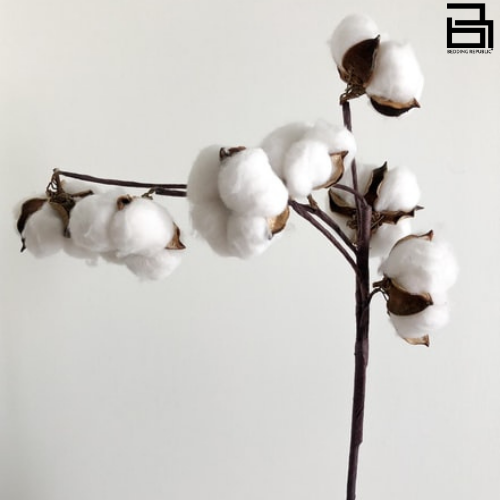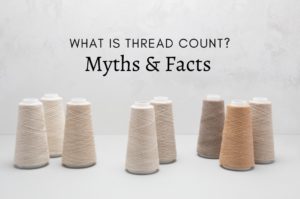If asked about the greatest invention that itself is a representation of the creativity that the human mind possesses, what would you say? Most of you must be in the depths of the most widely documented material, which is rich in history and delineates the culture of respective eras and areas. Yes, you got it right, the textile. The textile industry holds a huge percentage of market shares in this dynamic business world, reaping financial gains for the economy of respective countries. Over a while, the textile industry has grown massively and has a colossal range of segments.
In this sphere of the latest trends and styles, textile businesses are flourishing, adding colors to homes and clothes. Today’s global market of textile is prospering and the outcome of this growth provides a route towards high production of merchandise. With increasing purchase power, respective businesses are growing rapidly.
Let us have a look at what future can be foreseen with global trends and innovations in the respective industry:
“Conserve To Preserve”
It comes as no surprise that the textile industry has the highest number of consumers, thus the manufacturing sector of the industry ultimately attracts investments to level up to the demand. With the manufacturing sector picking its pace, it requires high consumption of energy to produce products. Lately, with the growing concern of ‘saving the planet’, many countries such as Australia, have adopted the policies that regard in favor of it. Therefore, energy efficiency is now becoming the prime concern for manufacturers. This trend has been present for more than a decade but only recently a rise has been seen in the demand for eco-friendly products.
It is now the utmost priority of manufacturers to produce products efficiently. It benefits the textile industry in numerous ways, including a reduction in energy imports, which ultimately lower the cost of production, and a reduction in greenhouse gas emissions, which keeps the environment clean.
As a rapid increase is seen in buyers’ concern about how the product is produced, new methods are likely to be introduced in the future to produce products with less consumption of energy and efficiency. The energy needs to be conserved for a brighter future.

“Extricate Resources”
What reminds you when you hear the sentence, limited resources, unlimited wants, “Scarcity”. We all are aware of how tired the earth is trying to fulfill the wants of people residing on it who have paid little to no attention to its well-being for the longest. However, with time people have now started to realize the worth of keeping the earth clean, healthy, and happy. You need to give to get something in return. Thus, the ideology of recycling nowadays is being implemented to the highest degree, in many parts of the world. There are concerning brands that have started to recycle plastic bottles and create fabrics out of them.
More of it is expected to be seen in the future, where no plastic waste will be seen on the ocean or earth rather it will be recycled and used again but in different shapes.

“Natural Is Precious”
It has been long since synthetic fiber made its way to the textile market. It changed our lifestyle, from clothing to our home decors and coverings, everything evolved. The synthetic fabrics were produced at lower costs and thus, worked in favor of manufacturers as well as buyers. We all have been buyers of synthetic fabrics such as polyester and nylon. Polyester has been widely used in our homes especially in purchasing bedding accessories. However, not many people have had a good experience with it, except for it being pocket friendly.
A recent shift is seen in demand where people prefer buying products made out of natural fibers than synthetic ones. People are now more conscious and have started to adopt an organic lifestyle. Thus, they prefer to buy products that are made from natural fabrics, such as cotton and linen. The natural fabrics are too valuable. They bring in the comfort that we are longing for.
The design and colors of natural fabric are available as per our perspective as a customer. Currently, oldies are back in fashion, and the theme is expected to remain the same in the future.
Moreover, with the given condition of the environment, climatic conditions are getting worse. Therefore, this change leads toward a future where only organic crops will be grown for the textile industry. They require less attention and do not create tension for farmers into looking for a place with water reserves nearby. Cotton crops have high heat tolerance, and thus, they can be grown even if a small percentage of water is given to them. In the coming years, cotton fiber is likely to be high in demand.

“Technical Revolution”
How can the largest industry in the world stay behind in technology? With rising demand, businesses must update as the advancements enter the market to produce products efficiently. In terms of recent reports, the paradigm shift of the textile industry is turning towards a technological revolution. It is expected that after a decade that the advancement in technology will not only be restricted to production and design, but the dynamics of retail will have a new shape, attracting future generations.
The textile industry, following the latest trends and advancements, has introduced itself to the virtual world to find its potential customer, fitting in the certain criteria, and making the availability of the product certain. With the e-commerce industry prospering, it has benefitted manufacturers and us as customers in terms of cost and ease.





